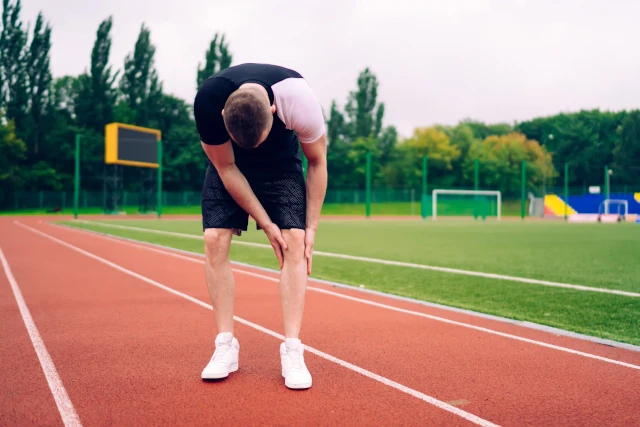
Lower Back Pain? Best Exercises and Stretches for Relief
- Dr. Rekha Menon (MPT)
Connect with our expert physiotherapist for personalized physiotherapy advice.
Why Exercise Matters for Chronic Back Pain
Engaging in physical activity strengthens the muscles supporting your spine, improves flexibility, and reduces stiffness. Regular, gentle exercises can also increase blood flow and nutrient distribution to the spine, fostering healing.
Top Exercises for Chronic Back Pain Relief
- Pelvic Tilts:
Lie on your back with knees bent and feet flat on the floor. Tighten your abdominal muscles and press your lower back against the floor. Hold for 5 seconds, then relax. This helps improve flexibility and strengthens core muscles.
- Bridges:
Lie on your back with knees bent and feet hip-width apart. Press your heels into the floor as you lift your hips to create a straight line from your knees to shoulders. Hold for 5–10 seconds before lowering slowly. This strengthens the gluteus muscles and supports the lower back.
- Bird-Dog Exercise:
Start on your hands and knees. Extend your right arm and left leg simultaneously, maintaining a flat back. Hold for a few seconds, then switch sides. This enhances core stability and strengthens the lower back.
- Cat-Cow Stretch:
Start on your hands and knees. Arch your back upward (cat), then dip your belly towards the floor while lifting your head (cow). Alternate between these positions for a minute. This stretch improves spine flexibility and eases tension.
- Child’s Pose:
Kneel on the floor, sit back on your heels, and stretch your arms forward on the floor. Hold for 20–30 seconds and breathe deeply. This gently stretches the lower back and reduces tension.
Best Stretches for Chronic Back Pain
- Knee-to-Chest Stretch:
Lie on your back with knees bent. Pull one knee towards your chest while keeping the other foot flat on the floor. Hold for 15–30 seconds and repeat with the other leg. This helps lengthen the lower back muscles and alleviate pain.
- Piriformis Stretch:
Lie on your back and cross your right ankle over your left knee. Gently pull your left thigh toward your chest. Hold for 20–30 seconds and switch sides. This relieves tension in the glutes and lower back.
Tips for Safe Exercise
- Start Slowly: Begin with a few repetitions and gradually increase as your strength improves.
- Focus on Form: Proper form is essential to avoid strain. Consider consulting a physiotherapist for guidance.
- Listen to Your Body: If any exercise exacerbates your pain, stop immediately and consult a healthcare provider.
Benefits of Regular Exercise for Chronic Back Pain
- Improved Mobility: Regular stretching and strengthening can restore range of motion.
- Pain Reduction: Strengthening surrounding muscles helps support the spine and reduce pain.
- Enhanced Posture: Targeted exercises promote better alignment and posture, reducing future issues.
When to See a Professional
If chronic back pain persists despite regular exercise, or if it worsens, seeking advice from a medical professional or physiotherapist is recommended. They can provide a tailored exercise plan and additional treatment options.
Connect with our expert physiotherapist for personalized physiotherapy advice.



